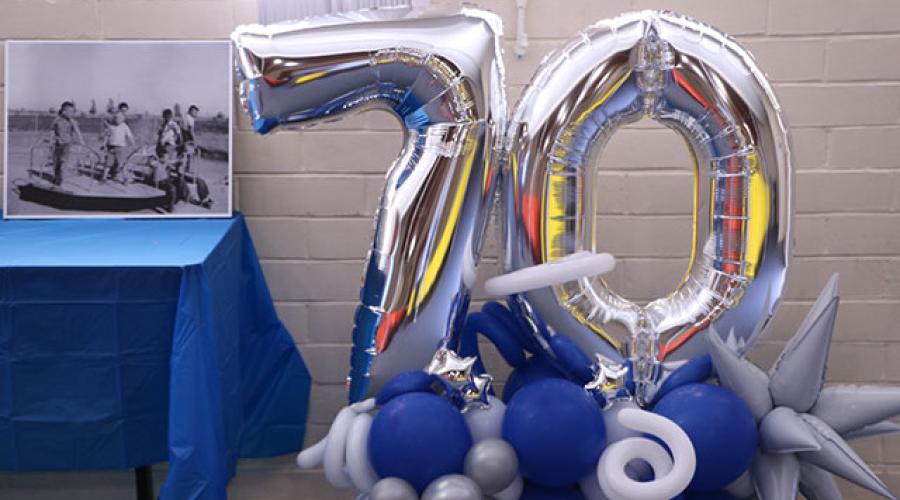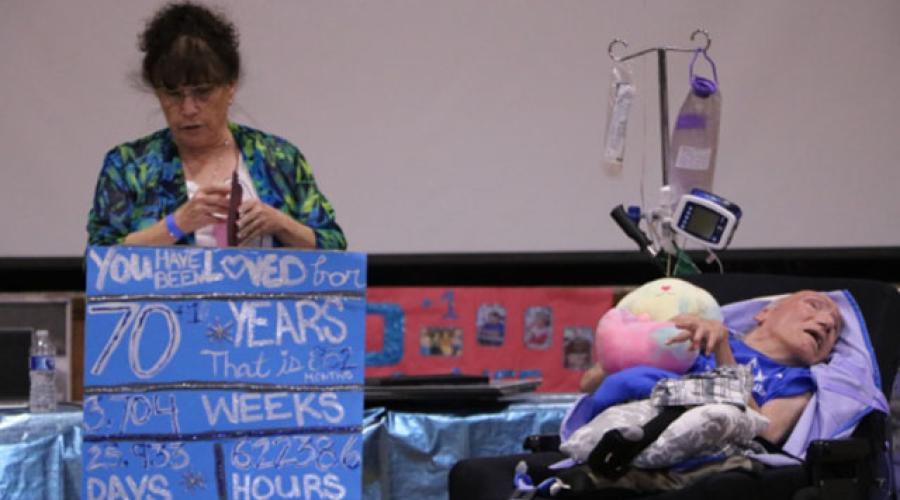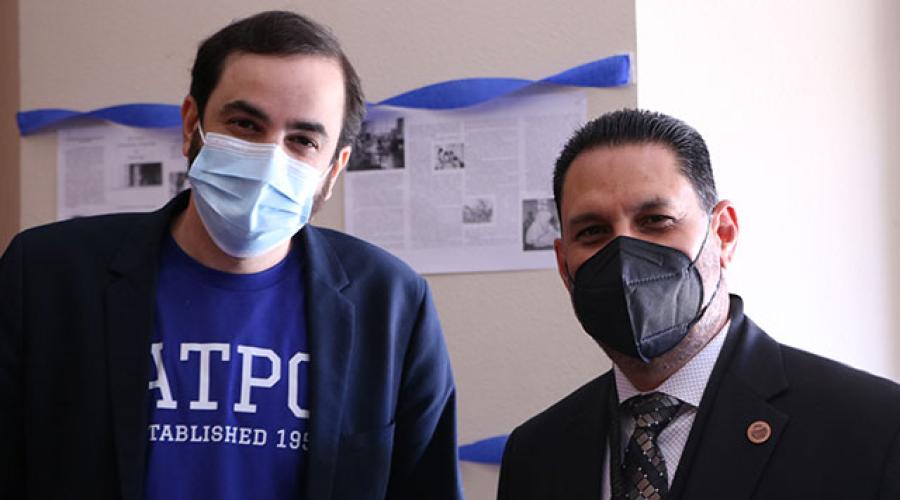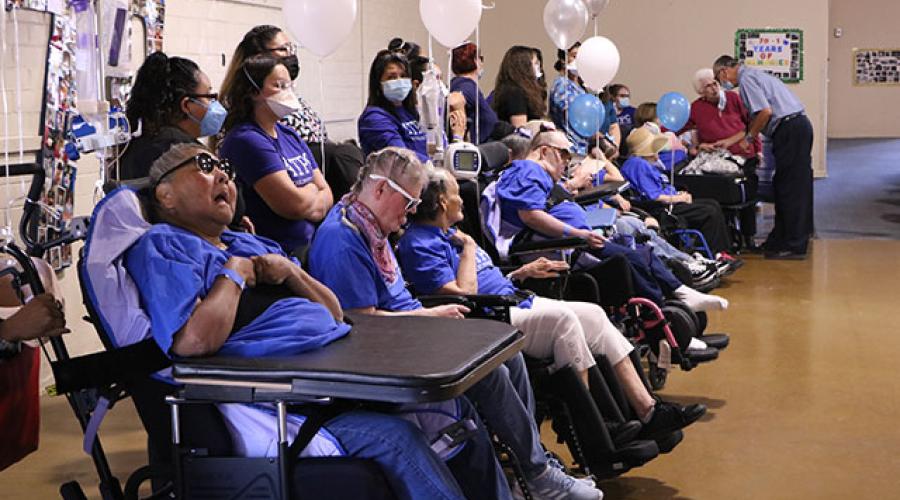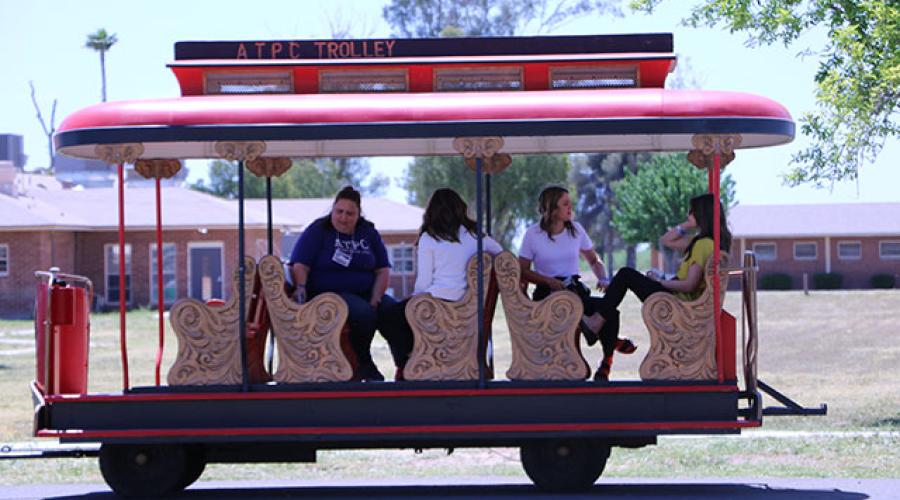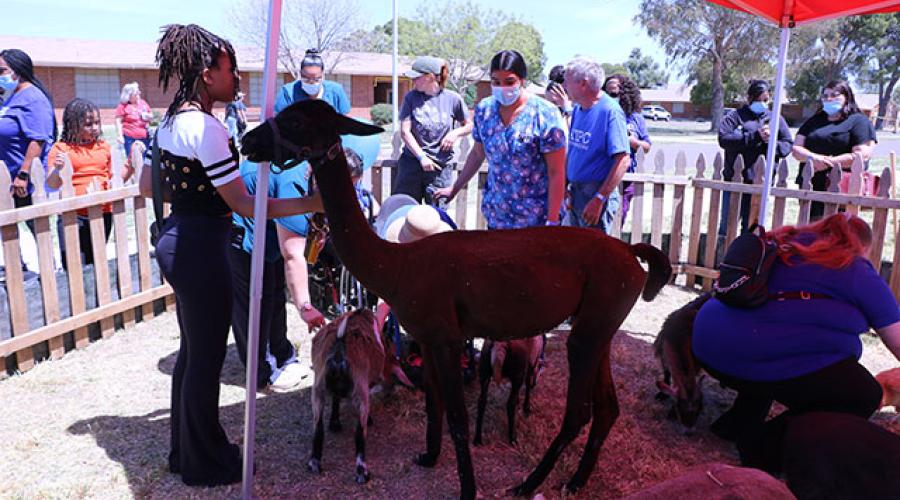ATPC Celebrates More Than 70 Years of Caring
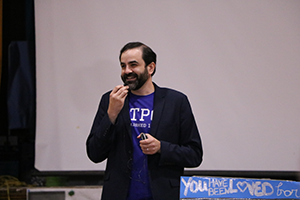
DDD Assistant Director Zane Garcia-Ramadan
The Arizona Training Program in Coolidge (ATPC) hosted its 70+1 Anniversary Celebration Event last week at its campus outside the city. The 71st anniversary of ATPC is more than a symbol of longevity, it’s a symbol of societal transformation.
“Through ATPC, we are able to understand how far we have come in supporting the [Intellectual and Developmental Disability] population in Arizona,” said Zane Garcia Ramadan, Assistant Director of the DES Division of Developmental Disabilities.
The “70+1-plus-one” anniversary is designated this way because last year’s planned 70th celebration had to be postponed due to COVID-19 restrictions. “Today we remember our past, honor the present, and celebrate the future,” said ATPC Administrator, Tonia Schultz, in her opening remarks.

Tonia Schultz, ATPC Administrator
In the mid-20th century, institutionalizing a child born with an intellectual or developmental disability was not only common, it was the preferred practice in American society. Originally named the Arizona Children’s Colony, ATPC first opened its doors on March 19, 1952. Since that time, it has served more than 3,000 individuals with developmental disabilities. At its peak, it was home to 1,200 Arizonans. The facility stopped accepting new admissions in 1979, and today, 55 individuals still call ATPC home.
The event featured a presentation by Blinda Mills, sister and guardian to her brother Darryl, who was one of the first residents to be admitted to ATPC on March 19, 1952, along with his identical twin, Dorryl. Blinda was there to celebrate with her brother and tell her mother’s story. At the age of 19, Blinda’s mother already had one child at home, and was also raising newborn twin sons. The identical twins had identical, fragile medical conditions which required constant care. Quoting her mother, Blinda said:
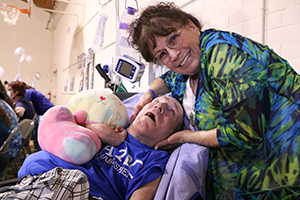
Blinda Mills and her brother, Darrel Arrington
“I had no choice but to make the painful and life-changing decision of placing [my sons] into an institution…. “It was not an easy decision or one that was made hastily. After extensive medical examinations and consultation, coupled with trips to various state facilities, ATPC was an answer to my fervent prayers… Unfortunately, in 1958, I again found myself facing the same painful decision. My six-year old daughter, who had been born Microcephalic, had progressed to the point of needing extensive medical care 24 hours a day, 7 days a week. Based on my knowledge of the wonderful care and attention given to my twins, I chose to place her at ATPC.”
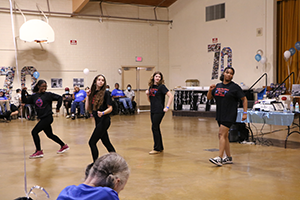
Coolidge High School Advanced Dancers
After the opening remarks, attendees were entertained with a performance by the Coolidge High School Advanced Dancers, followed by a composition of music and pictures by Jessica Johnson. Outside were booths for face painting, photos, ATPC T-shirt sales, and a petting zoo. Visitors were also welcome to join a staff-guided tour of the facility, and visit the Memory Room, which features a display of historical photos, books, toys, equipment and furnishings.
“ATPC is so unique,” said Ms. Schultz, as she encouraged first-time and returning visitors to see “that we are family here.”
History of ATPC
Originally named the Arizona Children’s Colony, ATPC first opened its doors on March 19, 1952. Back in the 1950s, parents had few options to address the needs of a child born with a developmental or intellectual disability. Fewer options were available if the child also had severe medical needs.
Renamed the Arizona Training Program in Coolidge (ATPC) in 1970, the facility consists of dozens of buildings situated over 87 acres of land. Since its Children’s Colony inception, ATPC provides its residents with 24/7 care, including medical services, vocational training, meals, recreational activities, and generates an atmosphere where residents enjoy the love and camaraderie of their ATPC family. ATPC has served more than 3,000 children. At its peak, it was home to 1,200 Arizonans with intellectual or developmental disabilities.
Over the past seven decades, there have been many changes to the world of developmental disabilities and for ATPC. In 1962, legislation was approved that allowed ATPC residents the option to remain when they turned 18 years of age. At one time, the colony resembled what we usually think of as an institution. That has changed significantly. ATPC Administrator, Tonia Schultz, noted how staff has worked diligently over the years to ensure the facility radiates a personal, home-like atmosphere. “Each home has a spirit of its own, reflecting the members that reside there,” said Ms. Schultz.
Employment
In addition to serving as home to its residents, ATPC is also a large employer in the small city of Coolidge. At one time, ATPC was the city’s largest employer. In addition to nurses, doctors, therapists and other caregivers, ATPC employs teachers/instructors, culinary and kitchen staff, buildings and grounds maintenance staff, security, and administrative staff.
Excerpts from a letter to the Arizona Legislature (2010) by Fay Arrington, mother of three children admitted to ATPC. Fay’s son, Darryl Arrington, who was among the first to be admitted to the Children’s Colony in 1952, and is the last remaining resident of that class.
“ATPC is a residential facility for developmentally disabled persons. Opened in 1952 by the State of Arizona, it has provided thousands of residents with dignity, joy, happiness, a sense of belonging, as well as, the therapy and medical treatment necessary to insure their quality of life…
… ATPC has not been only a home but a community to my children. It is not an institution as many think. It is a place where everyone knows everyone. Where the clients and caregivers interact as family. Where clients consider each other as brothers and sisters - worrying about each other when sick or hurt and rejoicing together when little things are accomplished. It is their home and their family!
– Fay Arrington



